Table of contents
Use in the kitchen
We are all familiar with pastries garnished with sesame seeds, but the small seeds have much more to offer than just adding flavor to baked goods. A distinction is made between peeled and unpeeled (= whole) sesame seeds ( Sesamum indicum ). Unless otherwise specified, the seeds are sold unpeeled, raw and dried. Organic quality is preferable.
Can you eat sesame seeds unpeeled? is a common question. Unpeeled sesame seeds are the more nutritious and healthier option and have an intense, bitter, nutty flavor.
Can you eat sesame seeds raw? Yes, that is the best way to eat sesame seeds. You can sprinkle sesame seeds unpeeled and raw or as sprouts over salads and raw food creations. It is also part of vegan sushi creations and tastes great ground in muesli, e.g. in gluten-free pea muesli (or pea muesli plus oat flakes ). In addition to light, yellowish-gray or beige seeds, there are also brown and black sesame seeds. The varieties do not differ greatly in taste. Black sesame seeds, however, have a reputation for being more aromatic.
Difference between peeled or unpeeled sesame seeds? Black sesame seeds are unpeeled - as are the brownish varieties; white or beige sesame seeds are available in both varieties. Inside, all the seeds are cream-colored to white. When peeling, the valuable fiber is removed, which is mostly in the shell. If you grind unpeeled sesame seeds, you retain the benefits of the unpeeled seeds.
Roasted sesame seeds, which have a particularly intense flavor, are a component of various spice mixtures such as Gomasio in Japan (Goma: Japanese for sesame). Sesame seeds are also popular as a spice in China and the Middle East. In Africa, roasted sesame seeds, which have been chopped up shortly before consumption, are sprinkled over food. The sesame paste tahini is used in Arabic cuisine to make hummus . Sesame seeds are also highly valued in sweets, such as the dessert Halva, which is also popular in Eastern Europe. In the USA, vegan waffles are made from sesame seeds (Vegan Benne Seed Waffles) and in Mexico, sesame is part of the seasoning sauce Mole Poblano.
The nutty-tasting cold-pressed sesame oil goes well with salads and is often used in Asian recipes. The flavorful, amber-colored oil from roasted sesame is used in small quantities as a seasoning oil. There is also organic sesame flour (partially deoiled from unroasted sesame seeds). 3 Sesame flour has good swelling properties, but because it is gluten-free, baking only works with a maximum of 10 to 12% of the flour quantity. This gives a nutty flavor.
Vegan recipe for sesame tahini
Ingredients: 300 g unpeeled sesame seeds (sesame kernels, organic), 50 ml sesame oil, 1 pinch of salt .
Preparation: Carefully roast the unpeeled sesame seeds in a pan. Puree the cooled seeds with sesame oil and salt to form a homogenous mass. The puree will keep for several weeks in the fridge if it is well sealed.
Vegan recipe for hummus with sesame paste
Ingredients: 500 g cooked chickpeas, 3 garlic cloves, juice of one lemon, 4 tablespoons tahini (sesame paste), salt, ground cumin ; if necessary olive oil (preferably rapeseed oil or linseed oil ) and a little water ; unpeeled organic sesame seeds for garnish.
Preparation: Puree the cooked chickpeas together with the garlic and lemon juice. Add a little more water if necessary. Fold in the tahini and season the puree with olive oil, salt and cumin. Instead of olive oil, you can also use the healthier rapeseed oil or linseed oil, or leave out the oil altogether, as the sesame paste contains oil. Finally, refine the hummus with chopped parsley or fresh coriander and unpeeled sesame seeds.
Vegan recipes with raw, unhulled sesame seeds can be found under the note: " Recipes that have the most of this ingredient ".
| Not only vegans or vegetarians should read this: Vegans often eat unhealthily. Avoidable nutritional errors . |
Purchasing - Storage
Conventional sesame and organic sesame can be found in larger supermarket chains such as Coop, Migros, Rewe, Edeka, Spar, Billa and Hofer . However, not always in the healthier, unpeeled version. At discounters such as Aldi, Lidl, Volg or Denner, sesame is not yet part of the permanent range. In organic shops, health food stores, organic supermarkets such as Denn's Biomarkt and Alnatura or in the food departments of drugstores, tahini and sesame oil are available alongside unpeeled, roasted and different colored sesame varieties. Raw tahini can be found online. Sesame flour is available in Turkish grocery stores.
Due to the different countries of origin, sesame is in season for us all year round .
The availability of unpeeled sesame seeds varies depending on the size of the store, catchment area, etc. You can find our recorded food prices for the DA-CH countries above under the ingredient image - and by clicking you can see their development at various suppliers.
Storage tips
Sesame seeds (unpeeled) generally last for several months. Undamaged seeds should be stored in a cool, dry and dark place. Sesame sprouts should only be used when they are very fresh, as they quickly become bitter. Unfortunately, according to scientific studies, the packaging also plays a role: in non-hermetic bags, the degree of mold infection of the seeds increases and the germination of the seeds decreases. However, sesame seeds stored in hermetic bags still showed a germination rate of 89.7 to 88.3% after 6 months of storage - compared to 61.67% in non-hermetic bags. 27
Ingredients - Nutritional values - Calories
Raw sesame contains approx. 573 kcal/100g, of which around 50% is oil (fat), with white seeds having the highest oil content at 52-59%. Due to the different thickness of the seed coats of light, brown and black varieties, the oil content of sesame is not uniform. The brown seeds contain around 50% oil and the black seeds 43-51% oil. The oleic acids in sesame consist of palmitic acid (5.7 g/100g), stearic acid (1.6 g/100g), arachidonic acid (0.25 g/100g), oleic acid (19.9 g/100g), linoleic acid (18.7 g/100g) and alpha-linolenic acid (0.67 g/100g). 2
The ratio of linoleic acid (omega-6 fatty acid) to alpha-linolenic acid (health-promoting omega-3 fatty acid) is crucial for a healthy diet. Sesame has a poor ratio of 57:1. According to recommendations from the Federal Nutrition Commission ( EEK ), you should not exceed an average of 5:1 per day. To improve this poor ratio, combining sesame with omega-3-rich linseed or chia seeds is recommended. Erb-Müesli can also correct this. In our ingredient list, select "sorting by health values" to filter healthy ingredients - or those that correct an unfavorable ratio. The same applies to recipes, e.g. with the LA:ALA ratio criterion.
Studies show that the fatty acid composition and fatty acid content of sesame remain almost constant at temperatures up to 220 °C. However, at roasting temperatures of more than 240 °C, the content of unsaturated fatty acids such as oleic acid and linoleic acid decreases drastically. 2
Sesame contains more than 18% protein and an amino acid composition that is unusual for oilseeds. While essential amino acids such as lysine or leucine are less abundant, sesame is rich in sulfur-containing amino acids, such as methionine . It also contains plenty of tryptophan (0.39 g = 156% of the daily requirement). 2,3 To improve the profile of essential amino acids, it is recommended to eat sesame and pulses, amaranth or quinoa as soon as possible.
100 g of sesame seeds contain around 2.5 mg of manganese (covers 123% of the daily requirement), similar to linseed or rye . Pine nuts contain even more of this trace element at 8.8 mg/100g.
Despite the poorer absorption of iron from plant sources, sesame is considered a good source of iron (15 mg/100g = 104% of the daily requirement 3 ). Spices such as black cumin, white pepper or coriander contain a similar amount of iron, but you consume very little of it. Combining it with vitamin C- rich fruit or vegetables improves the bioavailability of plant-based iron.
Other high nutrient contents in sesame, which cover more than 100% of the daily requirement per 100 g of consumption, are copper (408%) and calcium (122%). Also worth mentioning is selenium, which covers 63% of the daily requirement at 34 µg/100g, and magnesium (351 mg/100g = 94% of the daily requirement) - but potassium only covers 23%. 3
You can find the total nutrients of sesame, the coverage of the daily requirement and comparison values with other ingredients in our nutrient tables. In the article Nutrients explained you will get a detailed insight into the topic.
Effects on health
Is sesame healthy or unhealthy? The ideal calcium-magnesium ratio is between 1.7 and 2.6 5 and is found in sesame seeds. The reasons for this recommended nutrient ratio are that the two minerals are regulated by the same hormone system and that they are reabsorbed from the urine in the kidneys. Losses through sweat are also in a ratio of 2:1. In addition, the higher the magnesium intake, the lower the calcium intake and vice versa.
Sesame strengthens bones and teeth, can moisten dry tissue, strengthen the liver and kidneys and lower blood sugar levels. 6
How much sesame per day? Scientific studies show significant differences in pain intensity when taking 40 g of sesame seeds per day for two months. 12 For a better LA:ALA ratio, sesame seeds can be combined with other seeds and nuts: walnuts and macadamia nuts both show a good ratio between omega-6 and omega-3 fatty acids .
The oil extracted from sesame is said to help with rhinitis sicca (dry nose) and soothe irritated nasal mucosa. It stays on the mucous membrane up to nine times longer than products in an aqueous solution. 14
Sesame seeds are gluten-free and suitable as a dietary food for people with celiac disease (sprue, gluten-sensitive enteropathy). Look for the gluten-free symbol, which only licensed products are allowed to carry.
Secondary plant substances
Many of the health effects of sesame can be attributed to the secondary plant substances it contains. Our article on secondary plant substances provides an overview of the classification of substance groups, their occurrence in foods and possible effects on humans.
Sesame contains the following secondary plant substances:
- Isoprenoids : Terpenes: Triterpenes (phytosterols, asiatic acid), monoterpenes (piperitol); Terpenoids: Jionoside D 4, 25,26
- Polyphenols: Phytoestrogens: lignans (sesamin, sesamolin, saminol, sesamol, sesamolactol, episesaminon, lariciresinol, sesangolin, samin, pinoresinol, matairesinol, nortrachelogenin, kadangustin), isoflavones (iristectorin B, pterocarpane, methoxyisoflavone, genistein); phenolic acids: chlorogenic acid, protocatechualdehyde, para-hydroxybenzoic acid, echinacoside, ferulic acid, salicylic acid, cinnamic acid; Flavonoids: flavonols (acuminatin, limocitrin, galangin), flavones (nepetine, luteolin, eupatilin, jaceosidin, chrysoeriol, tricine, diosmetin, ladanetin, jaceosidin, isoscutellarein), anthocyanins (delphinidin), flavanones (prunin, hesperetin), flavanonol (phellamurin) 24,25,26
- Alkaloids : Protoalkaloids: Indole alkaloids 26
- Other organic compounds: Quinones: anthraquinones, naphthoquinones 24
However, it should be noted that the composition of secondary plant substances in sesame can vary depending on the variety, time of harvest and growing conditions. Therefore, quantities are only of limited use and should only be understood roughly.
Phytosterols from sesame can reduce the absorption and formation of cholesterol. They also improve HDL cholesterol levels (high-density lipoprotein), which are responsible for transporting cholesterol back to the liver. High HDL levels can protect against vascular deposits and prevent heart attacks and strokes. 4 In addition to its positive effects on cholesterol levels, sesame is also said to lower blood sugar levels. In combination, these effects have been used in the treatment of type 2 diabetes. 24
Sesamin, the main lignan in sesame, has been shown in studies to have effects such as detoxification and protection of the liver and kidneys, protection against oxidative damage, inhibition of inflammation and prevention of the development of hypertension. 2, 15,24 Several studies have also shown that sesamin has strong anti-carcinogenic effects. These effects are attributed to its growth-inhibiting, pro-apoptotic, anti-inflammatory, anti-metastatic, anti-vascular and pro-autophagic properties. However, the exact signals that sesamin triggers in cancer cells have not yet been fully uncovered. 2, 24
The lignans sesamin, sesamolin, sesaminol and sesamol contained in sesame oil are also said to have a wound-healing effect. 15 Sesamin has also been shown to reduce high blood pressure (to a small extent). 13
Dangers - Intolerances - Side effects
Sesame is one of the strong allergens that must be declared (assigned letter "N"). The seeds contain 7 allergens that relatively often lead to allergic reactions. Many processed foods contain sesame, often just to refine or decorate. 1
Folk medicine - natural healing
Internally, sesame - consumed as seeds - can help with premature hair loss and greying, during the recovery period, with chronic dry constipation, tooth decay, osteoporosis, joint stiffness and with dry coughs. Sesame (as whole seeds) is also in demand for symptoms such as tinnitus, poor eyesight, dizziness and headaches associated with weak liver and kidney energy. Sesame leaves are used against cholera (in children), diarrhea, dysentery, catarrh, cystitis; sesame oil for dry constipation. External infusions with seeds can be helpful for problems with hemorrhoids (sesame also works in a hemorrhoid ointment). Oil-lime water mixtures are healing for burns, boils and ulcers. 6
Ecological footprint - animal welfare
According to Denmark's climate database CONCITO, the CO 2 footprint of raw (but peeled) sesame seeds is 5.14 kg CO 2 eq/kg (2021: 3.62 kg CO 2 eq/kg). Despite extensive research, we have not found a value for unpeeled sesame seeds: It is obvious that this is slightly lower. This makes the figure similar to the CO 2 equivalent ofpumpkin seeds (2024: 4.83 kg CO 2 eq/kg; 2021: 3.2 kg CO 2 eq/kg). 18 Roasting processes, on the other hand, are known to increase the ecological footprint.
The amount of water required to produce 1 kg of sesame is quite high at 9371 liters, compared to sunflower seeds (3366 liters, for example). 19 Peeling sesame seeds also requires a lot of water. This is another reason to choose the unpeeled version. 16
Infestation by unwanted insects is one of the biggest challenges in sesame cultivation. To prevent this, a large number of synthetic pesticides are used in conventional cultivation. However, these have a detrimental effect on the environment, important pollinators and other insects, which is why alternative methods are preferable. 21 Ideally, when purchasing sesame seeds, you should buy organically grown ones, for example using neem oil, which has been proven to be successful against sawflies and white lice. 22
In September 2020, Belgium reported an unauthorized pesticide (ethylene oxide) in sesame seeds from India, which led to large-scale investigations and controls within the EU . Many products (such as hummus, bread or sauces) were withdrawn from trade because they also showed residues of this substance. This affected both conventional and organic sesame seeds. One possible explanation was that the seeds were fumigated to eliminate salmonella contamination. 20
For detailed explanations of various sustainability indicators (such as ecological footprint, CO2 footprint, water footprint), see our article: What does the ecological footprint mean? .
Animal welfare - species protection
As part of a research project at the University of Rostock, a biologist in West Africa was able to show that wild and honey bees are important for high sesame yields. Through pollination, farmers can increase their sesame yields by up to 60%. 11 It can be assumed that sesame has good nectar and pollen values and is a good bee pasture; however, available studies focus more on the benefits for agriculture than on those for bees. However, the pollen of sesame plants does not seem to have a particularly phagostimulating effect on bees compared to other food sources (ie it does not strongly encourage consumption). 23
Worldwide occurrence - cultivation
Where does sesame come from? Originally, cultivated sesame ( Sesamum indicum ) comes from wild plants in South Asia (Malabar Coast, northwest India, Pakistani part of Punjab). Finds in Mesopotamia show that sesame was known there before 2000 BC. 7
The main countries that grow sesame include China, India, Myanmar (Burma), Sudan, Ethiopia and Nigeria. Burkina Faso, Paraguay and Bolivia have recently started growing sesame. The sesame mainly used in Europe comes from Ethiopia, India, Burkina Faso and Sudan. 10
Wildly Found
Original wild varieties of sesame ( Sesamum malabaricum or S. mulayanum ) may be found in South Asia and cultivated but wild sesame in subtropical and tropical growing regions of the world.
Wild sesame contains more chlorophyll and ripens particularly unevenly in the seed capsule. The reason for this is that the lower, ripened basal part opens while the upper part is still flowering. 2
Cultivation - Harvest
Sesame is particularly suitable for organic cultivation, as it has modest soil requirements and does not require any kind of fertilizer. In small-scale, extensive farming, e.g. in Africa, cultivation and harvesting are still done by hand. Special varieties are used in which the seed capsules only open after harvesting and drying through intensive shaking. 9
The annual, herbaceous plant reaches heights of up to 3 m and is usually unbranched. The bell-shaped flowers are white to dark red in color. Their 2-3 cm long fruits are finely hairy capsules covered with glands. The 2.5 to 3 mm long, egg-shaped seeds ripen in the capsule. 17
Sesame requires a warm, sunny location with moderate moisture. The slender sesame is planted at a distance of 30 to 50 cm. Pot cultivation is advisable in cooler regions with humid summers, as the plant needs constant temperatures of 15-20 °C and can only tolerate persistent moisture to a limited extent. In cooler regions, walls, corners, greenhouses and winter gardens, where the heat accumulates in summer, are ideal. 8
The yield of sesame varies greatly from one growing region to another, averaging 350-500 kg/ha per year. The yield is lower than that of other oilseeds, which explains the high commercial price of sesame. 2 Because sesame is so small and flat, it is harvested as dry as possible to avoid the difficult drying process. Sesame is stored at 6% moisture, i.e. very dry, to prevent rancidity. Large-scale operations use color-sorting machines to reject any discolored seeds. Unripe or undersized seeds are used to make sesame oil.
Further information
What is sesame? Sesame ( Sesamum indicum ) is a widespread, cultivated plant species from the sesame family (Pedaliaceae) and is probably one of the oldest oil plants in the world.
Black sesame ( Sesamum indicum nigrum ) was once considered a separate type of sesame, but today it is considered a color variety of sesame ( Sesamum indicum ). There are cream-colored sesame seeds, brownish ones and black ones.
Alternative names
The term "light sesame" can sometimes refer to non-specifically peeled seeds - similarly, "light tahini" refers to sesame paste made from peeled sesame seeds.
The English name is sesame. Alternative names for sesame in English-speaking countries are gingelly, semsem or benne (seeds).
Other uses
Sesame is used as an insecticide (in combination with pyrethrum), as a lubricant or in the cosmetics industry for soaps and ointments. 6
Bibliography - 27 Sources
| 1. | Medizinische Universität Wien. Die 14 wichtigsten Allergene. Sesamsamen. |
| 2. | Jeong Seon KIM. Einfluss der Temperatur beim Rösten von Sesam auf Aroma und antioxidative Eigenschaften des Öls (Dissertation). PDF. Berlin 2001. |
| 3. | USDA (United States Department of Agriculture). Nährwerttabellen. |
| 4. | Phillips KM, Ruggio DM, Ashraf-Khorassani M. Phytosterol Composition of Nuts and Seeds Commonly Consumed in the United States. Journal of Agricultural and Food Chemistry. 2005; 53(24):9436–9445. |
| 5. | Costello RB, Rosanoff A, Dai Q et al. Perspective: characterization of dietary supplements containing calcium and magnesium and their respective ratio—is a rising ratio a cause for concern? Advances in Nutrition. March 2021;12(2):291-297. |
| 6. | Bown, D. Kräuter. Die grosse Enzyklopädie. Anbau und Verwendung. 2. Auflage. München: Dorling Kindersly; 2015. |
| 7. | Brücher H. Tropische Nutzpflanzen. Ursprung, Evolution und Domestikation. Springer: Berlin, Heidelberg, New York. 1977. |
| 8. | Hausgarten net: Sesam, Sesamum indicum – Anbau und Verwendung. |
| 9. | Ringana com: Sesam ernte dich. |
| 10. | Hefe-van-haag de: Sesamsaat. |
| 11. | Bienenjournal de: Baumwolle und Sesam brauchen Bienen. |
| 12. | Eftekhar Sadat B, Khadem Haghighian M, Alipoor B et al. Effects of sesame seed supplementation on clinical signs and symptoms in patients with knee osteoarthritis. Int J Rheum Dis. 2013 Oct;16(5):578–582. |
| 13. | Miyawaki T, Aono H, Toyoda-Ono Y et al. Antihypertensive effects of sesamin in humans. J Nutr Sci Vitaminol (Tokyo). 2009 Feb;55(1):87–91. |
| 14. | Frohn B. Balsam für die Atemwegsschleimhaut : Sesamöl gegen Rhinitis sicca. MMW Fortschr Med. 2010;152:53. |
| 15. | Sharif M, Alizargar J, Sharif A. Evaluation of the Wound Healing Activity of Sesame Oil Extract in Rats. World Journal of Medical Sciences 2013;9(2):74-78. |
| 16. | Foodprint org: Real Food Encyclopedia. Sesame. |
| 17. | Spektrum de: Lexikon der Biologie. Sesam. |
| 18. | CONCITO. The big Climate Database. Version 1. Sesame seeds, decorticated; Pumpkin seeds, dried. |
| 19. | Mekonnen MM, Hoekstra AY. The green, blue and grey water footprint of crops and derived crop products. Hydrol. Earth Syst. Sci. 2011; 15: 1577-1600. |
| 20. | Laainen T. Recalls of sesame seed products due to pesticide residues. 2021; EPRS: European Parliamentary Research Service. Belgium. |
| 21. | Lekamoi U, Kusolwa P, Mbega E. Importance of bio-pesticides formulations in managing insect pests of sesame in Africa. 2022. |
| 22. | Chaitra HS, Borad PK, Deb S. Ecofriendly management of important pests of sesame. Journal of Entomology and Zoology Studies. 2020;8(1):1613-1616. |
| 23. | Schmidt LS, Schmidt JO, Rao H et al. Feeding Preference and Survival of Young Worker Honey Bees (Hymenoptera: Apidae) Fed Rape, Sesame, and Sunflower Pollen. Journal of Economic Entomology. 1995;88(6):1591–1595. |
| 24. | Wei P, Zhao F, Wang Z, Wang Q, Chai X, Hou G, et al. Sesame (Sesamum indicum L.): a comprehensive review of nutritional value, phytochemical composition, health benefits, development of food, and industrial applications. Nutrients. 2022;14(19):4079. |
| 25. | Mili A, Das S, Nandakumar K, Lobo R. A comprehensive review on Sesamum indicum L.: Botanical, ethnopharmacological, phytochemical, and pharmacological aspects. Journal of Ethnopharmacology. 2021;281:114503. |
| 26. | Segla Koffi Dossou S, Xu F, You J, Zhou R, Li D, Wang L. Widely targeted metabolome profiling of different colored sesame (Sesamum indicum L.) seeds provides new insight into their antioxidant activities. Food Research International. 2022;151:110850. |
| 27. | Alemayehu S, Abera FA, Ayimut KM, Darnell R, Mahroof R, Harvey J, et al. Effects of storage duration and structures on sesame seed germination, mold growth, and mycotoxin accumulation. Toxins. 2023 Jan;15(1):39. |

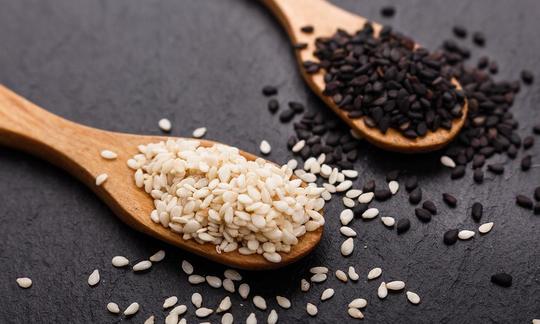

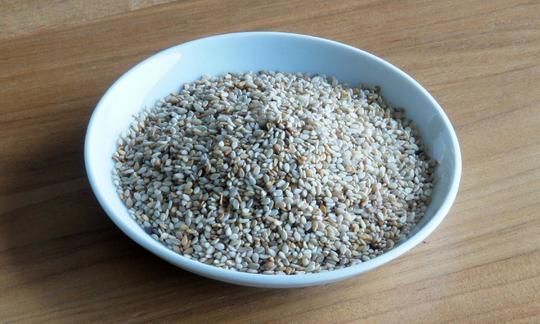

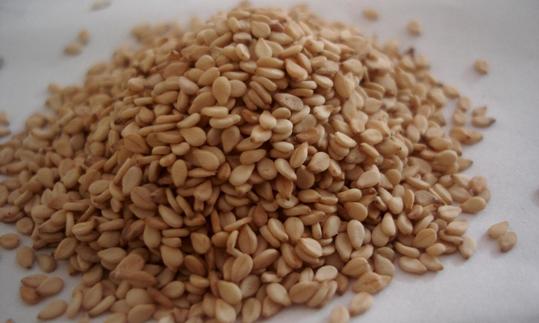

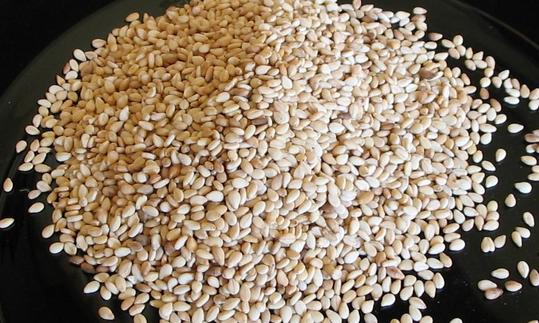

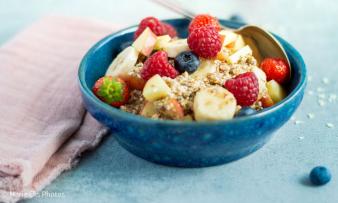

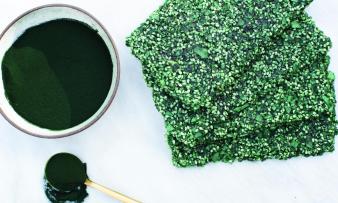





Comments